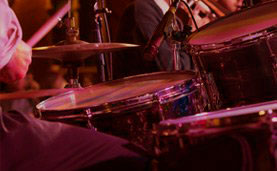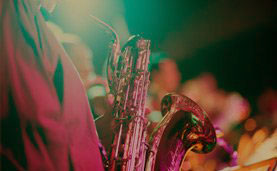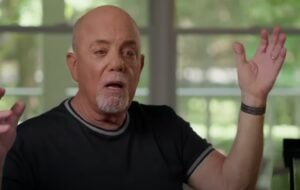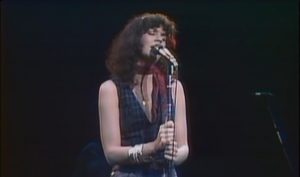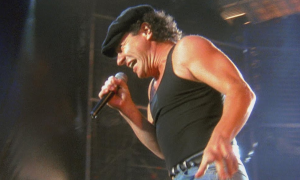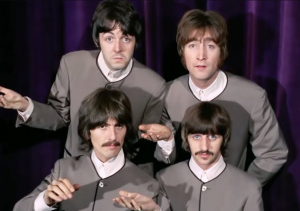The 30 Longest and Greatest Rock n’ Roll Songs

via @musicianschannelofficial / Instagram
Some songs hit so hard, you never want them to end. Whether it’s a slow-burning guitar solo, a hypnotic rhythm, or lyrics that feel like a personal anthem, there’s a certain magic in tracks that stretch far beyond the typical three-minute radio format. For rock fans, that magic often lies in the long haul — the songs that take their time, build layer upon layer, and reward patience with unforgettable moments.
Length in rock music isn’t just about duration — it’s often a creative choice. Some artists use the extended runtime to explore shifting tempos, evolve melodies in real time, or give each band member a moment in the spotlight. In many cases, these longer tracks end up being more than just songs; they’re sonic journeys. They defy structure, stretch genre expectations, and offer something immersive in a way short tracks simply can’t.
This list is a celebration of that ambition. It rounds up 30 of the greatest long-form rock songs — each clocking in at over ten minutes — that prove sometimes more really is more. These are the tracks that refused to hit the brakes and became classics not in spite of their length, but because of it.
30. “Sister Ray” (17:29) – The Velvet Underground, White Light / White Heat (1968)
The Velvet Underground didn’t just make music — they made noise art. “Sister Ray,” at over 17 minutes, is an unapologetic sonic onslaught born from a single improvisational studio take. It’s a wild, meandering trip of fuzz, chaos, and distorted freedom that refuses to cater to traditional structure or commercial expectations.
Lou Reed once described the song as a scene of drag queens, sailors, heroin, and an uninvited visit from the police — not exactly the subject matter you’d hear on FM radio. But that’s precisely what makes it fascinating. “Sister Ray” feels more like a performance art piece than a traditional song, a raw document of a band pushing themselves and their equipment to the brink.
Despite (or because of) its overwhelming abrasiveness, it’s a cult classic. For fans of experimental rock, it’s a rite of passage — a test of stamina and an immersion into the underbelly of New York’s avant-garde. There’s no chorus to sing along to, just pure sonic audacity.
29. “Got to Give It Up” (Live, 11:52) – Marvin Gaye, Live at the London Palladium (1977)
Marvin Gaye’s “Got to Give It Up” might start as a shy groove, but it soon transforms into a full-on celebration. On the extended 11-minute version, the song doesn’t just play — it breathes, stretches, and invites you into the party. The background chatter and layered instrumentation give the track a lived-in, spontaneous charm.
Gaye’s lyrics about overcoming dance floor anxiety add a relatable narrative to the rhythm. It’s a personal story, but one that resonates universally — the joy of letting go. When he sings “Let’s dance, and shout,” it doesn’t feel like a demand. It’s a gentle nudge into the spotlight, where everyone’s welcome.
As the second half shifts into an open-ended jazz-funk jam, it becomes more than a song — it’s a vibe that refuses to fade out. Few tracks capture the warmth and energy of a live crowd this naturally, and even fewer manage to make nearly 12 minutes feel too short.
28. “Get Up (I Feel Like Being a) Sex Machine” (10:48) – James Brown, single (1970)
James Brown’s iconic funk anthem isn’t just long — it’s electrifying from start to finish. “Get Up (I Feel Like Being a) Sex Machine” locks into a groove early and never lets go. Built around call-and-response dynamics, this track has the hypnotic quality of a mantra delivered over one of the most infectious beats in funk history.
The story behind the recording adds to its legacy. Bootsy Collins recalled having to read Brown’s body language during its creation, essentially translating movement into music. That unique communication is embedded in every measure, with each band member playing like they’re reading from the same invisible script.
With its stripped-down repetition and constant drive, it’s less a song and more a machine — smooth, rhythmic, and unstoppable. There’s no real destination here, just a constant momentum that makes you want to move and never stop.
27. “Telegraph Road” (14:18) – Dire Straits, Love Over Gold (1982)
“Telegraph Road” begins with a cinematic prelude — gentle keys, rolling thunder — before Mark Knopfler’s guitar sketches the journey of a man walking thirty miles with only a sack on his back. It’s storytelling on a massive scale, pairing Springsteen-like lyrical ambition with extended instrumental passages.
Inspired by a real highway in Michigan, Knopfler turns a stretch of asphalt into a metaphor for economic rise and decline. As the story unfolds, it weaves through industrial evolution, human struggle, and a longing for something more. Each verse adds new texture, new tension.
Clocking in at over 14 minutes, the song never drags. Instead, it evolves, unfolding like a short story — slow at first, then building toward a crescendo. It’s a rare rock epic that earns every second of its runtime through precision, emotion, and masterful pacing.
26. “Starless” (12:18) – King Crimson, Red (1974)
King Crimson’s “Starless” is a dark, twisting ride through layers of progressive rock brilliance. From the mellotron-drenched intro to the explosive finale, the track showcases everything the band did best — brooding atmosphere, musical dexterity, and controlled chaos.
At the core is John Wetton’s emotive voice and bass, setting the stage for Fripp’s guitar to gradually unravel into free-form madness. Add in dual saxophones and Bill Bruford’s jazz-infused drumming, and you’ve got a track that fuses rock, jazz, and something undefinably surreal.
Its resurgence in pop culture, especially via the horror film Mandy, introduced “Starless” to a new generation — but longtime fans have known for decades: it’s not just a King Crimson song, it’s one of prog rock’s crowning achievements.
25. “Machine Gun” (Live, 12:38) – Jimi Hendrix, Band of Gypsys (1970)
“Machine Gun” captures Jimi Hendrix at his most emotionally raw and sonically inventive. Performed live with Buddy Miles and Billy Cox, the track showcases not just Hendrix’s unmatched guitar tone but his ability to turn an anti-war message into a visceral musical experience.
From the opening salvo of gunfire-like riffs to the haunting feedback swells, Hendrix channels the chaos of battle with unflinching intensity. The chemistry between the trio is off the charts — Miles’ drumming is punchy and reactive, while Cox anchors the groove with steady, funk-laden basslines.
This is Hendrix the protestor, the technician, and the improviser — all in one. “Machine Gun” stands as proof that a guitar solo can be as powerful as any speech, and that music can be both beautiful and devastating all at once.
24. “The Low Spark of High-Heeled Boys” (11:41) – Traffic, The Low Spark of High-Heeled Boys (1971)
From the moment it fades in, “The Low Spark of High-Heeled Boys” invites you into a laid-back yet intricate world. The jazz-rock hybrid blends smooth saxophone lines, Steve Winwood’s soulful keys, and freeform transitions that feel spontaneous and perfectly timed.
What gives the song its depth is how loose yet deliberate it feels. The lyrics play like poetic fragments, while the music stretches out comfortably, lingering in the spaces between verses. Even when the band ramps up the tempo mid-track, it never loses its grip on the groove.
More than just a song, it’s a jam session that happens to be immortalized on record. For fans of longform storytelling in music, “Low Spark” remains a shining example of how to make 11 minutes feel like a warm breeze.
23. “In-a-Gadda-Da-Vida” (17:05) – Iron Butterfly, In-a-Gadda-Da-Vida (1968)
What started as a drunken mispronunciation of “In the Garden of Eden” became one of rock’s strangest and most iconic long songs. Iron Butterfly’s “In-a-Gadda-Da-Vida” is equal parts psychedelic trip, prog experiment, and organ-fueled epic.
The full 17-minute version is a far cry from the neutered radio cut. It features everything from extended solos to spiritual detours, including a bizarre but oddly fitting organ passage that channels Christmas hymns through a lava lamp haze.
Its pop culture legacy is just as weird as the song itself — from The Simpsons parody to countless covers. “In-a-Gadda-Da-Vida” may be absurd at times, but it’s unforgettable, and it represents the moment when rock decided it didn’t need to play by anyone’s rules.
22. “Coma” (10:15) – Guns N’ Roses, Use Your Illusion I (1991)
“Coma” is one of the most intense and unconventional songs in Guns N’ Roses’ discography. Sprawling over ten minutes, it abandons traditional structure in favor of a tense, ever-shifting narrative that explores addiction, trauma, and inner turmoil.
Slash wrote it during a drug-fueled spiral, and the sense of disorientation bleeds into the music. Ominous sound effects — ticking clocks, heart monitors, whispered voices — build a claustrophobic soundscape as Axl Rose delivers some of his most vivid, personal lyrics.
Despite its complexity and lack of a chorus, “Coma” holds your attention through sheer force of will. It’s a statement track, one that proves GNR’s ambition during the Illusion era wasn’t just about excess — it was about pushing their own musical boundaries.
21. “Rime of the Ancient Mariner” (13:45) – Iron Maiden, Powerslave (1984)
Iron Maiden’s “Rime of the Ancient Mariner” isn’t just long — it’s a literary adaptation set to galloping riffs and theatrical vocals. Based on the 18th-century poem by Samuel Taylor Coleridge, it tells the tale of a sailor cursed to wander the earth recounting his haunting tale.
Musically, it’s one of Maiden’s finest moments. Steve Harris’s bass leads the charge through shifting tempos and moods, while Bruce Dickinson channels both the narrator’s dread and redemption with operatic flair. It’s symphonic in scale but still unmistakably heavy metal.
For fans, it’s more than a song — it’s an experience. Clocking in at nearly 14 minutes, “Rime” redefined what a metal song could be: dense, literary, and emotionally resonant without sacrificing the genre’s intensity.
20. “Dark Star” (Live, 23:18) – Grateful Dead, Live/Dead (1969)
“Dark Star” began as a short, aimless track, but it quickly evolved into the Grateful Dead’s ultimate live vehicle for improvisation. The band turned it into a sprawling, open-ended exploration, regularly stretching it beyond 30 minutes during concerts. The version on Live/Dead is the most iconic, a 23-minute psychedelic odyssey where each band member becomes part of a swirling, collective soundscape.
What sets “Dark Star” apart is its commitment to formlessness. There’s no obvious structure, no verse-chorus-verse to fall back on. Instead, Jerry Garcia and company build and deconstruct melodies in real-time, weaving intricate musical dialogue through free-flowing passages. It’s like listening to a dream unfold, slippery and mesmerizing.
Even if it doesn’t fly by, the journey is worth it. The track demands active listening and patience, but the payoff is rich: a deeply textured performance that captures the spirit of the Dead’s improvisational peak. It’s not just a song — it’s a ritual.
19. “Heart of the Sunrise” (11:27) – Yes, Fragile (1971)
“Heart of the Sunrise” often gets overshadowed by Yes’ more radio-friendly cuts, but it’s one of their finest prog achievements. Opening with a jagged, syncopated riff, it sets a tone that’s both aggressive and precise — like King Crimson with cleaner lines. Jon Anderson’s vocals float above the storm, adding moments of calm to a track that constantly shifts its weight.
The interplay between Rick Wakeman’s keys and Chris Squire’s thundering bass is the heartbeat of the piece. Their chemistry drives the song through peaks and valleys, with Bill Bruford’s jazzy drumming keeping it fluid. It’s an elegant balance of light and dark, power and serenity.
Far from being just a warm-up for “Close to the Edge,” this track stands firmly on its own. It’s intense and emotional, a dynamic epic that condenses the DNA of classic Yes into under 12 minutes. If anything, it’s one of prog rock’s most underrated gems.
18. “Echoes” (23:31) – Pink Floyd, Meddle (1971)
Before The Dark Side of the Moon took them to the stratosphere, Pink Floyd mapped out their sonic ambitions with “Echoes.” Stretching across the entire second side of Meddle, it’s an immersive suite built on collaboration. Richard Wright’s iconic “ping” intro sets the scene, followed by layers of sound that evolve like a living organism.
David Gilmour’s seagull-like guitar wails, achieved with a reversed wah pedal, lend the track an eerie beauty. Meanwhile, Roger Waters’ lyrics explore themes of connection and consciousness, anticipating the band’s future lyrical depth. The track moves fluidly between moments of quiet ambiance and swirling crescendos.
“Echoes” is Pink Floyd stepping into their identity as sonic architects. Every second is purposeful, and the band’s chemistry is on full display. It’s long, yes, but never indulgent — instead, it’s a panoramic vision of what rock could sound like when given space to breathe.
17. “2112” (20:34) – Rush, 2112 (1976)
Rush’s “2112” is prog rock theater: a multi-chapter narrative wrapped in intricate riffs, philosophical musings, and sheer musical muscle. Set in a dystopian future where music is banned, the piece unfolds like a sci-fi opera, complete with rebellions, dreams, and cosmic awakenings. It’s not subtle, but it’s a blast.
Neil Peart’s lyrics are packed with libertarian overtones and youthful defiance, while Alex Lifeson’s guitar solos paint scenes as vividly as any lyric. Geddy Lee’s vocals shift from delicate reflection to righteous fury, matching the story’s emotional swings. The band leans into melodrama, and that’s part of its charm.
Despite its length and theatricality, “2112” holds together remarkably well. It’s the sound of a band staking its claim, unafraid of going big. Whether you see it as a towering epic or glorious nerd-fantasy rock, there’s no denying its impact — or its ambition.
16. “Maggot Brain” (10:21) – Funkadelic, Maggot Brain (1971)
“Maggot Brain” is a guitar eulogy unlike anything else in rock history. George Clinton’s now-legendary instruction to Eddie Hazel — “play like your mama just died” — resulted in one of the most emotionally raw performances ever captured. Over ten minutes, Hazel’s guitar seems to cry, rage, and mourn in waves.
There’s little more than reverb-drenched guitar and sparse backing, but that’s all it needs. The song’s power lies in its simplicity, allowing Hazel to pour himself into every bend and vibrato. His phrasing turns silence into punctuation, giving the track a feeling of deep personal loss.
“Maggot Brain” would go on to influence generations of guitarists and remain a centerpiece of Funkadelic’s identity. It’s a meditation, a meltdown, a spiritual confession — all channeled through six strings and raw feeling. Few instrumentals ever hit this hard.
15. “Free Bird” (Live, 11:30) – Lynyrd Skynyrd, One More From the Road (1976)
“Free Bird” became a punchline over the years, but the live version from One More From the Road reclaims its legacy. Clocking in at over 11 minutes, it transforms the studio original into something transcendent. The slow, heartfelt intro gives way to a fiery jam that cements its status as a Southern rock anthem.
Allen Collins’ extended solo — with help from Steve Gaines — is the real star. It doesn’t just dazzle with technical skill; it tells a story. Each note builds on the last, taking the crowd (and the listener) higher until it breaks into full-on flight, just like the song’s metaphor.
For all its overexposure, “Free Bird” still delivers. In this performance, you can hear why fans used to shout for it — not as a joke, but as a plea to experience something powerful. It’s not just long; it’s legendary.
14. “Close to the Edge” (18:12) – Yes , Close to the Edge (1972)
“Close to the Edge” is the Mount Everest of progressive rock — towering, intricate, and exhausting in the best way. Split into three movements, it combines spiritual themes, classical influences, and sci-fi wonder into a singular epic. From the nature soundscapes to Steve Howe’s spiraling guitar work, it’s a journey that demands attention.
The composition is dense, yet every detail feels intentional. Rick Wakeman’s keyboards elevate the track with baroque flair, while Jon Anderson’s voice floats through philosophical lines like “I get up, I get down.” The lyrics may be opaque, but the emotion is clear: this is a search for transcendence.
Producer Eddy Offord famously pushed the band (and himself) to the brink assembling it, but the result is a prog masterwork. “Close to the Edge” isn’t background music — it’s an experience. And for fans of the genre, it remains an essential pilgrimage.
13. “Do You Feel Like We Do” (13:46) – Peter Frampton, Frampton Comes Alive! (1976)
Peter Frampton’s “Do You Feel Like We Do” is a masterclass in turning a live performance into a communal event. At nearly 14 minutes, the song thrives on crowd energy and Frampton’s natural charisma. The talk box solo may be iconic, but it’s just one highlight in a set packed with instrumental firepower.
The interplay between band members is fluid and joyful. The song ebbs and flows between powerful riffs, call-and-response segments, and moments of near silence. When Frampton introduces the band — especially “Bob Mayo on the keyboards” — it’s like you’re right there in the arena, beer in hand.
What makes this version special is its pacing. It never feels like filler. Instead, it’s a celebration of rock performance at its peak, where every second counts. “Do You Feel Like We Do” doesn’t just fill time — it owns it.
12. “Marquee Moon” (10:38) – Television, Marquee Moon (1977)
“Marquee Moon” is both razor-sharp and sprawling — a paradox that only Television could pull off. Built around Tom Verlaine’s wiry guitar lines and Richard Lloyd’s intertwining counterpoints, the track grows methodically, never rushing to its climactic extended solo.
There’s a nervous tension throughout the song, like a band walking a high wire in real-time. The rhythm section is tight but understated, allowing the guitars to dance, clash, and ascend. Every shift feels organic, like the song is breathing rather than following a chart.
Even at over ten minutes, it never loses focus. “Marquee Moon” is a post-punk epic that trades spectacle for precision, offering something cerebral yet hypnotic. It’s one of the most distinct long songs in rock history — endlessly replayable and oddly meditative.
11. “The End” (11:41) – The Doors, The Doors (1967)
“The End” started as a breakup song but morphed into something far more ominous. Jim Morrison transformed it into a sprawling meditation on destruction, death, and psychological collapse. By the time it was used in Apocalypse Now, it had already become a cultural monolith.
The song unfolds like a slow-motion descent. Robby Krieger’s guitar drips with menace, while Ray Manzarek’s keys pulse like a funeral dirge. Morrison delivers each line with dramatic weight, turning cryptic verses into declarations of doom.
Yes, it’s intense, indulgent, and occasionally uncomfortable — but that’s the point. “The End” isn’t meant to be pleasant. It’s meant to haunt you. Nearly 12 minutes of poetry, madness, and eerie calm, wrapped in the sound of a world slowly crumbling.
10. “Papa Was a Rollin’ Stone” (11:44) – The Temptations, All Directions (1972)
The Temptations’ take on “Papa Was a Rollin’ Stone” turned a good song into a masterclass in atmosphere and storytelling. While the Undisputed Truth originally recorded it, producer Norman Whitfield reimagined it with sweeping orchestration and dramatic pacing that transformed the track into a cinematic epic. From the first haunting bassline to the echoing trumpet, every element builds tension before a single lyric is even delivered.
What makes this version special is its use of space. Nearly four minutes pass before vocals enter, and the spaces between verses stretch just as long, filled with instrumental passages that pull listeners deeper into the narrative. The Temptations play the role of children asking hard questions about a flawed father, with each answer revealing a little more pain, confusion, and resignation.
Despite its near 12-minute length, “Papa Was a Rollin’ Stone” never drags. It’s hypnotic and emotionally rich, a rare soul track that doubles as social commentary and sonic experiment. It closes not with resolution, but with a lingering groove that leaves you thinking — and maybe wanting more.
9. “Funeral for a Friend / Love Lies Bleeding” (11:07) – Elton John, Goodbye Yellow Brick Road (1973)
Elton John’s “Funeral for a Friend / Love Lies Bleeding” is a two-part suite that feels like a rock opera compressed into 11 minutes. The instrumental opener is dramatic and ominous, beginning with ambient effects before unfolding into a powerful, synth-heavy passage. It’s theatrical without being overindulgent, building mood and suspense like the opening act of a grand performance.
Then the curtain lifts. “Love Lies Bleeding” kicks in with a surge of energy, driven by Elton’s piano and a propulsive band performance. The transition between the two parts is seamless, even though they weren’t initially written as a pair. Together, they form one of the strongest album openers of the ‘70s — explosive, emotionally charged, and beautifully paced.
The blend of elegance and rock grit is signature Elton. Lyrically, it’s a breakup song soaked in bitterness, but musically it soars. With its sweeping arrangement and dynamic shifts, it’s more than a song — it’s a theatrical experience that still hits as hard as ever.
8. “Desolation Row” (11:21) – Bob Dylan, Highway 61 Revisited (1965)
“Desolation Row” is Bob Dylan at his most surreal and sprawling. Clocking in at over 11 minutes, the song trades in electric guitars for an acoustic arrangement that keeps the focus on Dylan’s vivid, often cryptic lyrics. It’s less a linear story than a dreamlike collage of characters, images, and snatches of twisted Americana.
Within this strange carnival of Einstein, Cinderella, and the Phantom of the Opera, Dylan explores themes of alienation, absurdity, and society’s decay. Each verse is a new act, populated with misfits and allegorical figures that reflect a world turned sideways. It’s poetry with a pulse, veering between the absurd and the profound.
Despite its length and density, “Desolation Row” remains engaging thanks to Dylan’s rhythmic delivery and the spare, haunting instrumentation. It’s a landmark of lyrical ambition in rock, showing that words — and time — could stretch the limits of what a song could be.
7. “Station to Station” (10:15) – David Bowie, Station to Station (1976)
David Bowie’s “Station to Station” is part myth, part manifesto. It begins with a swirling, mechanical intro that mimics the sound of a train pulling in, and it takes more than three minutes before Bowie even utters a word. But once “the return of the Thin White Duke” is announced, the song shifts into high gear.
What follows is a genre-bending ride through funk, soul, krautrock, and glam — a reflection of Bowie’s chameleonic nature. He mixes existential lyrics with cold detachment and emotional urgency, creating a duality that defines much of his mid-‘70s output. The instrumentation tightens as the track progresses, lifting the mood from somber to euphoric.
“Station to Station” feels like a transformation captured in real-time. It’s theatrical but grounded, futuristic yet drenched in personal tension. For Bowie, it marked the start of a new artistic chapter — one that would soon lead to Low and his Berlin era.
6. “Voodoo Chile” (14:50) – Jimi Hendrix, Electric Ladyland (1968)
The longest studio recording of Jimi Hendrix’s career, “Voodoo Chile” is a blues jam taken to celestial heights. Recorded live in the studio with Steve Winwood on organ, Jack Casady on bass, and Mitch Mitchell on drums, it’s a spontaneous, 15-minute storm of improvisation and raw emotion.
Hendrix opens with an extended spoken intro before diving into a sludgy groove. The song ebbs and flows, anchored by Winwood’s swirling organ and Mitchell’s dynamic drumming. Casady’s bass hums beneath the surface while Hendrix moves effortlessly between snarling solos and introspective licks.
This isn’t just a jam — it’s a conversation among greats, each given room to speak through their instruments. “Voodoo Chile” would spawn the more famous “Slight Return,” but this version remains the deeper, darker plunge into Hendrix’s blues-soaked imagination.
5. “Supper’s Ready” (22:54) – Genesis, Foxtrot (1972)
“Supper’s Ready” is Genesis’ definitive prog rock odyssey. Split into seven distinct sections, it’s a surreal narrative that blends romance, apocalypse, and spiritual awakening — all delivered with theatrical flair. Peter Gabriel’s storytelling dances between the absurd and the profound, with the band navigating each shift like a well-rehearsed stage troupe.
Steve Hackett’s guitar and Tony Banks’ keyboards weave intricate patterns, moving from pastoral calm to full-on musical chaos. The sections flow together with surprising coherence, despite the wildly different moods. One moment it’s whimsical; the next, it’s apocalyptic, and then suddenly serene again.
At nearly 23 minutes, “Supper’s Ready” is Genesis at their most ambitious, laying the groundwork for both Gabriel-era epics and future Phil Collins-fronted experiments. It’s not just a song — it’s a journey that helped define a genre, loved by fans who know every odd turn by heart.
4. “In My Time of Dying” (11:04) – Led Zeppelin, Physical Graffiti (1975)
Led Zeppelin’s “In My Time of Dying” is a reimagined blues spiritual blown up to epic proportions. Inspired by Blind Willie Johnson and Bob Dylan’s earlier versions, the band infused it with thunderous energy and improvisational grit. From the first slide guitar licks, it’s clear this isn’t just another blues cover — it’s an eruption.
The chemistry is palpable, especially as John Bonham’s drums thunder beneath Jimmy Page’s slashing riffs and Robert Plant’s pleading vocals. The track builds momentum and intensity, shifting tempos and grooves while still feeling tightly held together by pure instinct.
The final minute, with Bonham famously yelling “That’s gotta be the one!” as the track crashes to a stop, captures the raw, live-in-the-room magic of Zeppelin at full force. It’s heavy, spiritual, and electrifying — their longest studio track and one of their boldest.
3. “Achilles Last Stand” (10:26) – Led Zeppelin, Presence (1976)
“Achilles Last Stand” is Led Zeppelin’s epic of myth and muscle. Born out of Robert Plant’s recovery from a car accident and written during the band’s tax exile in Morocco, the track is both physically intense and emotionally fraught. Page layers guitar after guitar to build a towering wall of sound.
Plant’s lyrics evoke ancient heroes and distant lands, blending fantasy with real-world turmoil. It’s one of his most evocative performances, riding atop Bonham’s galloping drums and Jones’ melodic bass lines. Every element is urgent, pushing the song forward like a warhorse charging into battle.
The result is a sonic onslaught that’s both complex and exhilarating. It’s the centerpiece of Presence and a declaration that even wounded, Zeppelin could still create something monumental. “Achilles Last Stand” is the sound of resilience — fierce, beautiful, and relentless.
2. “Shine On You Crazy Diamond” (26:00) – Pink Floyd, Wish You Were Here (1975)
“Shine On You Crazy Diamond” is Pink Floyd’s elegy for founding member Syd Barrett, stretched into two atmospheric halves that bookend Wish You Were Here. Clocking in at 26 minutes total, it’s a slow-building, deeply emotional tribute that unfolds in nine movements, each layer revealing more depth.
The signature four-note guitar phrase from David Gilmour is instantly recognizable, and it sets the mood for the entire journey — contemplative, sorrowful, and reverent. Richard Wright’s synths and saxophone sections add texture and warmth, creating an ethereal backdrop for Roger Waters’ heartfelt lyrics.
Despite its length, “Shine On” is never overwhelming. It’s a song of mourning, but also of beauty and nostalgia. It captures the spirit of Barrett without turning maudlin, and in doing so, it stands as one of the most graceful long-form compositions in rock history.
1. “Whipping Post” (Live, 22:40) – The Allman Brothers Band, At Fillmore East (1971)
“Whipping Post” became legendary in its live form — and the nearly 23-minute version on At Fillmore East is where its full power was unleashed. Gregg Allman’s anguished vocals and the band’s tight, improvisational chemistry make every second count. It’s a blues song, a rock song, and a jam-band ritual all in one.
Duane Allman’s guitar solo is the showstopper. It builds with fiery emotion, eventually erupting into one of the most revered live guitar moments in rock. The rhythm section — particularly Butch Trucks and Jai Johanny Johanson — keeps things grounded while the melodies soar.
What sets this performance apart isn’t just its length — it’s the intensity. “Whipping Post” feels like a cathartic release, a storm you get caught in willingly. It’s the perfect closer to this list: long, masterful, and unforgettable.


